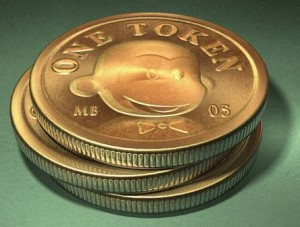Word-of-Mouth (WOM) is the primary factor behind 20% to 50% of all purchasing decisions. Its influence is greatest when consumers are buying a product for the first time or when products are relatively expensive (factors that tend to make people conduct more research, seek more opinions, and deliberate longer than they otherwise would). And its influence will probably grow because the digital revolution has amplified and accelerated its reach to the point where word of mouth is no longer an act of intimate, one-on-one communication. Today, it also operates on a one-to-many basis: that is, product reviews are posted online and opinions disseminated through social networks. Some customers even create Web sites or blogs to praise or punish brands.
Very interrelated to WOM is customer loyalty. Although the need to provide an after-sales experience that inspires loyalty and therefore repeat purchases isn’t new, not all loyalty is equal in today’s increasingly competitive, complex world. There are 2 types of loyalty: Active loyalists, who not only stick with it but also recommend it; Passive loyalists, who choose to stick to the brand either because of complacency or confusion caused by too many choices, and stay with a brand without being committed to it. Despite their claims of loyalty, passive consumers are open to messages from competitors who give them a reason to switch.
Some key concepts related to WOM
3 Main Classifications:
Experiential
WOM is the most common and powerful form, typically accounting for 50% to 80% of word-of-mouth activity in any given product category. It results from a consumer’s direct experience with a product or service, largely when that experience deviates from what’s expected. (Consumers rarely complain about or praise a company when they receive what they expect.) Complaints when airlines lose luggage are a classic example of experiential WOM, which adversely affects brand sentiment and, ultimately, equity, reducing both receptiveness to traditional marketing and the effect of positive WOM from other sources. Positive WOM, on the other hand, can generate a tailwind for a product or service.
Consequential
Marketing activities also can trigger WOM. The most common is what we call consequential WOM, which occurs when consumers directly exposed to traditional marketing campaigns pass on messages about them or brands they publicize. The impact of those messages on consumers is often stronger than the direct effect of advertisements, because marketing campaigns that trigger positive WOM have comparatively higher campaign reach and influence. Marketers need to consider both the direct and the pass-on effects of WOM when determining the message and media mix that maximizes the return on their investments.
Intentional
A less common form of WOM is intentional—for example, when marketers use celebrity endorsements to trigger positive buzz for product launches. Few companies invest in generating intentional WOM, partly because its effects are difficult to measure and because many marketers are unsure if they can successfully execute intentional WOM campaigns.
Measuring Word-of-Mouth Equity
A starting point has been to count the number of recommendations and dissuasions for a given product. There’s an appealing power and simplicity to this approach, but also a challenge: it’s difficult for marketers to account for variability in the power of different kinds of WOM messages. After all, a consumer is significantly more likely to buy a product as a result of a recommendation made by a family member than by a stranger. These two kinds of recommendations constitute a single message, yet the difference in their impact on the receiver’s behavior is immense. In fact, our research shows that a high-impact recommendation, from a trusted friend conveying a relevant message, for example, is up to 50X more likely to trigger a purchase than is a low-impact recommendation.
Loyalty Platforms and Social Loyalty Platforms
The growth of online social media networks such as Facebook, Twitter, LinkedIn, Pinterest, Instagram, Youtube has made online word of mouth a channel for businesses to acquire customers. Offering your customers membership to loyalty rewards club can incentivize your customers to spread positive reviews and experiences about your product. For the first time ever, merchants can have their loyal customers share their activity on Facebook to bring in new customers. The cloud based loyalty platform saves merchants IT costs versus existing desktop server solutions. Sign up today to learn how Social Loyalty can save you 88% on new customer acquisition cost. Visit SocialLoyaltyApps.com to learn more.









